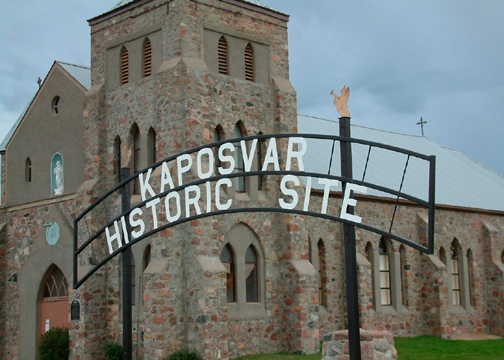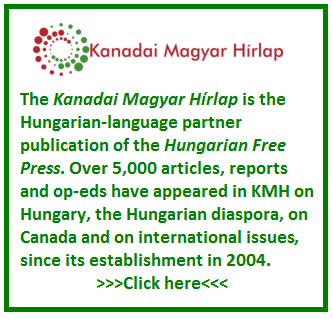The language statistics of the 2016 Census were in the news a few weeks ago, after an error by Statistics Canada showed an unexpected increase in the number of English-speakers in the French-majority province of Québec. Before the error was discovered, the reported growth of the English community sparked the usual nationalist consternation among some Québec politicians about the “threat” to the French language and culture posed by the English minority. The 2016 Census, however, offers some noteworthy data pertaining to Hungarian as a heritage language in Canada–specifically, the number of Canadians who listed Hungarian as their mother tongue. Earlier today, I published these statistics in a Hungarian-language article, but given the decline in the number of Hungarian speakers in this country, it seemed appropriate to also share this in English.
Between 2011 and 2016, the number of Canadians who listed Hungarian as their mother tongue declined markedly. In 2011, 71,100 Canadians had listed Hungarian as their mother tongue. By 2016, this number fell to 64,340. When broken down to provinces, we can see that 60% of Hungarian speakers live in Ontario, primarily in southwestern Ontario. In contrast, the Hungarian language presence in the Prairie provinces that once served as the home to late nineteenth and early twentieth century Hungarian settlements (primarily Saskatchewan and Manitoba) is close to vanishing.

The stone church in the former Hungarian settlement of Kaposvar, SK, now part of the town of Esterhazy, Saskatchewan. The church is a pilgrimage site for Roman Catholics.
Hungarian as a mother tongue by provinces, in descending order:
- Ontario: 38,395
- British Columbia: 9,490
- Alberta: 6,890
- Québec: 6,155
- Saskatchewan: 1,480
- Manitoba: 1,245
- Nova Scotia: 245
- New Brunswick: 190
- Prince Edward Island: 60
- Newfoundland and Labrador: 55
- Yukon: 50
- Northwest Territories: 20
- Nunavut: 5
If we look at urban centres, we can see that there are 18 cities or agglomerations in Canada that have measurable Hungarian populations, most of which are in southern and southwestern Ontario.
These include, in descending order:
- Toronto, ON: 19,800
- Vancouver, BC: 5,535
- Montreal, QC: 5,475
- Calgary, AB: 3,830
- Hamilton, ON: 3,265
- Ottawa, ON*: 1,865
- Kitchener-Waterloo, ON: 1,750
- St. Catherine-Niagara**, ON: 1,695
- Edmonton, AB: 1,690
- London, ON: 1,370
- Windsor, ON: 1,325
- Winnipeg, MB: 1,020
- Victoria, BC: 680
- Oshawa, ON: 965
- Guelph, ON: 960
- Brantford, ON: 630
- Regina, SK: 485
- Saskatoon, SK: 400
*Ottawa, ON: These numbers include Hungarians living in Gatineau, QC.
**St. Catherine-Niagara includes Welland, where there is an active Hungarian community.
Statistics on mother tongue are perhaps most useful when examining the state of the Hungarian language and even Hungarian identity in Canada. In recent years, the Prime Minister’s Office of the Government of Hungary has consistently referred to a figure exceeding 300,000 when speaking about the size and clout of the Hungarian “community” in Canada. This relatively large figure is used to justify government programming and funding of Hungarian communities by the State Secretary of the Diaspora and Hungarians Abroad, which forms part of the Prime Minister’s Office. As we know, the 300,000+ figure is misleading, if it is used to determine the size of the Hungarian Canadian community. This number includes Canadians who choose to report multiple ethnic origins, with Hungarian being just one of several.
The 64,340 figure, referring to the number of people who listed Hungarian as their mother tongue, gives a more accurate picture of the scope of the Hungarian “presence” in Canada. While there are certainly those in Canada who speak no Hungarian at all, but identify, in part, as Hungarian, it is worth noting that even figures relating to mother tongue are also fairly inclusive. They would capture those who learned to speak Hungarian as a child, but no longer use the language in their daily life, nor at home with their non-Hungarian spouse or family. It also includes those who would have learned Hungarian as a child, but no longer speak it proficiently.
Even with the immigration of ethnic Hungarians to Canada in the past two decades from Romania’s Transylvania region and from Hungary’s other neighbouring countries, the Hungarian linguistic presence in Canada continues to dwindle.
| The Hungarian Free Press is a volunteer-based current events news site offering English-language reporting and analysis on Hungary, East/Central Europe and the Hungarian diaspora. We advocate for the re-establishment of rule of law in Hungary and we embrace the values of liberal democracy. While all of our writers are volunteers, running a news site still incurs expenses. If you would like to help preserve this publication, please click on the donation button below. Thank you! |



